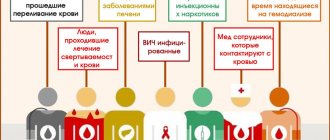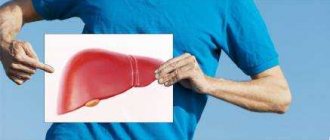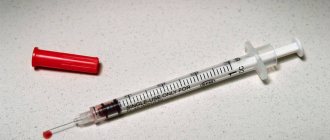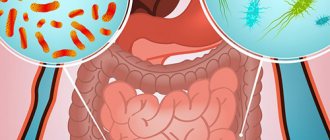Physiological changes in the body before menarche
Menarche is the culmination of physiological processes in the female body. During puberty, a girl becomes an adult and her reproductive function is formed. At this time, physiological and neuroendocrine changes occur in the body, secondary sexual characteristics appear, and the menstrual cycle is formed.
Puberty for girls takes 2-3 years, unlike boys, for them it takes five years.
Puberty is preceded by two developmental phases:
- Adrenarche is the phase of sexual development during which the adrenal glands mature and androgenic steroid hormones are produced. This occurs at 6-8 years of age.
- Gonadarche is the period of formation of natural ovarian function at 8 years of age. The synthesis of gonadotropins begins, the amount of estrogens increases.
Further, during the pubertal stage, the following occur:
- Telarche. Around 10-11 years of age, the mammary glands begin to form, and the vaginal mucosa begins to estrogenize.
- Pubarhe – pubic hair grows at the age of 11 years. Hair growth occurs due to an increase in androgenic hormones.
An increase in estrogen stimulates active bone growth. With a deficiency of these hormones, an appearance may develop that is uncharacteristic of the genetic sex.
A couple of years after thelarche, menarche occurs. Extension of this period by more than 2.5 years is a reason to see a doctor.
Causes of menarche disorders
Each girl experiences puberty at a different time. In many ways, the timing of menarche depends on heredity, and if the grandmother’s first menstruation came very early, then its early appearance in her granddaughter should not be considered a pathology. The timing is also influenced by living conditions, diet and illnesses suffered at an early age.
Statistics show that women living in the northern regions have their first periods later than women living in the south. Delayed menarche is also observed in slender, thin girls, and early puberty occurs in girls from high mountain regions.
Early menstruation
Early menarche is considered when the first menstrual flow appears in a girl under 10 years of age. But critical days at such a young age are not always considered a pathology. There are cases when hormonal disorders, leading to the earlier development of secondary sexual characteristics, arise due to a malfunction of the pituitary-hypothalamus system. Predisposing factors to this are hormonal tumors, injuries received at birth, and diseases of the central nervous system (epilepsy).
If puberty begins before the age of ten, very often the child may not be psychologically ready for this, which can cause not only severe anxiety, but also a state of shock. It is very important that the mother prepares her daughter in advance for the possible arrival of menstruation, especially if there have been cases of premature menarche in other generations in the family.
As adults, women who mature earlier than their peers have an increased likelihood of developing heart disease, osteoporosis, diabetes and breast cancer.
Late menstruation
A delay in the first critical days is much more common than their premature onset. This is explained by the too low body weight of modern teenage girls, because critical days are possible only with normal production of the female sex hormone estrogen. If there is insufficient body weight and too thin a fat layer, then estrogen production may not only decrease, but even stop altogether.
Medical reference books claim that for the onset of critical days, it is necessary that adipose tissue constitute at least 17% of body weight, and the girl’s weight must reach 45 kg. The most common reason for the late onset of menarche is precisely low body weight, and due to modern dubious canons of beauty, the number of girls exhausting themselves with diets is constantly growing. The pursuit of “glossy” beauty can not only delay the onset of menstruation, but also contribute to the development of various diseases.
In addition to excessive thinness, there are other reasons for delayed periods:
- poor living conditions;
- diseases of the endocrine system;
- excessive physical activity;
- constant stress and depression;
- insufficient development of the reproductive system organs.
If a girl did not have her period at the age of 15-16, this is a reason to visit a gynecologist and endocrinologist. Diseases associated with delayed menarche are detected extremely rarely, but by ignoring the problem, you can wait for the development of genital infantilism. Its main symptoms in adult women:
- vaginal underdevelopment;
- irregular shape of the uterus and underdeveloped cervix;
- changes in the ovaries, they may be too small;
- delayed physical development may be accompanied by delayed mental development, while the girl not only looks younger, but performs actions that correspond to her external age, and not her actual age.
Adult women who have their first menstruation late are more likely to subsequently experience spontaneous abortions, labor complicated by bleeding, weak labor, and even infertility.
First menstruation
With normal development, the first menstruation occurs at 12-13 years of age. The monthly cycle in teenage girls is characterized by instability and irregularity. In the first year, as a rule, there is no ovulation. The onset of permanent ovulation occurs approximately 2 years after menarche. Ovulation is characterized by an increase in progesterone levels.
It is believed that the onset of menarche is influenced by sufficient body weight. Therefore, the age of menarche is often delayed in ballerinas and gymnasts. But so far scientists have not figured out what exactly is delaying the onset of menarche - a lack of adipose tissue or constant stress loads. A diet rich in proteins and minerals is also important.
Menarche - birth of a woman
A mystery is something that is beyond our understanding, puzzling or confusing, it is something deep that we learn about as a revelation. When we talk about women's blood mysteries, we're talking about biological phenomena such as first menstruation, childbirth, and menopause, which throw unexpected and perhaps frightening knowledge at us. Although we do not understand why during these periods we change, grow and receive hitherto unknown information in such dramatic ways, we do it anyway. Here it is, the Riddle. And by sharing knowledge and revelations related to transformations in our body, we become acquainted with feminine nature, strength and wisdom. Menstruation is a great example of how mystery gave power and respect to the image of a woman. Before the development of science, menstruation puzzled people - how can you bleed so much and still remain safe and sound? It must be magic! Long before it was discovered that conception occurred through fertilization, it was believed that women could create life themselves simply by retaining their menstrual blood. This was considered an autonomous process: sexual intercourse was not associated with conception. Women, according to the ideas of those times, were probably visited by a spirit, then they preserved their blood, bore and gave the world a new life. Accordingly, menopause was considered not a loss, but an increase in strength - older women seemed to constantly hold back their blood and thus transcend the cycle of birth and death... In the civilized world, the womb is no longer considered a sacred temple, and the mysteries of the blood are no longer recognized. The separation of body and soul was especially facilitated by the development of medicine, according to which people are just a set of physiological functions. We now have tools to “help” the birth process, drugs to “make” periods or abolish things like menopause, and surgery to remove the uterus. We seek to dominate the forces of nature: we grow crops that deplete the soil, cut down forests and pollute water. This would be unthinkable in a world that worships the feminine essence. It cannot be denied that technology has its advantages - today doctors save the lives of many women during difficult childbirth and in pathological gynecological situations. But we have lost the Riddle. Recovering women's blood rituals as profound psychological turning points will reveal new and rediscover the most ancient female archetypes. Help a woman's birth
Early onset of puberty
Premature pubertal development is the process of the appearance of secondary sexual differences at an uncharacteristic age of up to 8 years. It can occur according to the type of conformity or nonconformity to genetic sex. In the first case, development is called isosexual, in the second - heterosexual. Isosexual is more common.
The causes of violations in the onset of puberty are:
- Pathological formations of the ovaries.
- Hypothyroidism.
- Failures in estrogen production in the ovaries.
- Adrenal tumors.
- Brain tumors.
- Unreasonable hormonal therapy.
- Anomalies in the structure of the genital organs (uterine aplasia, etc.)
Periods after menarche
After the onset of menarche, menstruation occurs again after 25-28 days. This is the standard interval, but in some cases it may be larger or smaller. It happens that cyclicity after menarche is not established immediately, so you can wait even two to three months for the start of a new menstruation. This is normal and there is no need to worry unnecessarily.
The first year after menarche is considered special in a girl’s life. It is not recommended to perform any surgical operations during this period. Also try to protect your child from stress, as it can then cause serious female problems in the future.
Many girls experience premenstrual syndrome (mood changes, abdominal pain, breast swelling) before menstruation.
Physiology of menstruation
The menstrual cycle is the monthly processes of the female body that occur in the brain and ovaries, and are manifested in the rejection of the uterine endometrium under the control of female hormones. This is the process of monthly preparation of the body to accept pregnancy.
The monthly cycle takes 21-35 days, bleeding - 3-7 days. At the same time, cyclic changes in the ovaries and uterus occur.
The menstrual cycle is controlled by:
- The cerebral cortex. The bark governs the female monthly cycle.
- Hypothalamus. The impulses of the central nervous system and the action of hormones are concentrated in its subcortical sections. The hypothalamus produces all the hormones that are transmitted to the pituitary gland and releases the necessary hormones.
- Pituitary gland. It synthesizes gonadotropic hormones.
- Ovaries. They produce female hormones, a follicle is formed, and ovulation occurs. In the first half of the female cycle, one or more follicles mature under the control of the pituitary part of the brain. The follicle and its components change during this period, that is, over 14 days. Ovulation is the process of the release of an egg from the follicle into the abdominal cavity and fallopian tube. Within a day, the female cell is destroyed. Luteinization is the transformation of the follicle into a gland called the corpus luteum. The corpus luteum is an overgrown layer of the follicle, yellow in color due to lipochrome pigment. The gland is destroyed after two weeks. The ovaries produce female and male hormones. Estrogens influence sex-specific changes in the genital organs and the blood supply to the uterus. Gestagens control the process of endometrial growth and transform the inner lining of the uterus. Androgens affect the growth of a woman's genital organs.
- Uterus and vagina. The cells of these organs respond to ovarian hormones. The uterus is the central organ that falls under the hormonal action of the ovaries. The endometrial uterine layer changes monthly. During the proliferation phase, the inner layer of the uterus is restored under the influence of estrogens. During the secretory phase, the endometrial lining swells and prepares to receive an egg. If the egg is not fertilized, the amount of progesterone and estrogen decreases, the endometrium is rejected, and menstruation begins.
The girl's well-being at menarche
Girls menstruate differently. The symptoms of their approach are approximately the same and are expressed during the first two months before menarche:
- Nausea.
- Irritability.
- Deterioration or increase in appetite.
- Pallor of the skin.
Pain
Painful sensations occur in the lower abdomen and lumbar region. There may be pain or dizziness, and general weakness occurs. The girl may feel tired and overwhelmed. Parents notice causeless mood changes and emotional excitability of the child. The feeling and behavior resembles PMS in women.
Discharge from the genital tract
With the beginning of the menstrual cycle, the discharge is insignificant. Ovulation does not always occur, and the risks of pregnancy are small, although they do exist. The intensity of the discharge varies until the functioning of the reproductive system is fully adjusted.
The first menstruation in girls lasts on average 4 days, and the discharge is of average intensity. At first, the child will experience pain in the lower abdomen, but on the 2nd - 3rd day they will disappear. If pain persists throughout all menstrual days, the daughter should be shown to a doctor and examined for dysmenorrhea.
The occurrence of abdominal pain is explained by contractions of the uterus, which is affected by prostaglandin substances. At significant concentrations in the blood, prostaglandins increase the contractile function of the uterus and cause spasms in blood vessels. Dysmenorrhea signals an abnormal position of the uterus or pathological changes in its structure.
Dysmenorrhea cannot be left untreated. An advanced disease provokes the development of serious pathologies of the genital area and infertility.
Adviсe
The onset of menarche is a crucial period in the life of every girl. It is the mother’s responsibility to tell her daughter about behavior during menstruation and about maintaining personal hygiene. During the first and subsequent menstruation, it is not recommended to wear heavy objects, subject the body to intense physical activity, swim or take a bath. It is very important to perform hygiene measures. The girl also needs to be told about the changes that have occurred in the body and how important contraception is at this age.
Read
Also:
- Uterine bleeding - how to stop?
- Why are periods delayed in teenage girls 12-15 years old?
- Heavy menstruation or uterine bleeding: how to determine it yourself and whether it is worth treating
- Duphaston for delay, for calling and normalizing menstruation
Real stories of first periods
There is a YouTube channel on the Internet called “The Story of My First Period.” On this portal, girls of different ages talk about how they started menstruation, share their experiences and give advice to those who are faced with a problem and do not know what to do.
The teenage channel “The Story of My First Period” has many subscribers and millions of views. Here we discuss possible irregularities in the menstrual cycle in girls, the causes of early or late periods, possible delays, etc. The channel “The Story of My First Period” tells real life events.
What is menarche, what time should it start and what symptoms do it present? Such questions arise in every girl during adolescence. To prevent the onset of the menstrual cycle from becoming a surprise and causing fear in the child, mothers should explain in advance what happens during menstruation and how hygiene procedures should be performed.
https://youtu.be/r-h1KOBCyo8
Treatment
The first task of the doctor is to establish the cause of the violations. In the absence of indications indicating the presence of pathologies, the girl is recommended to undergo regular observation by a pediatric gynecologist and follow the rules of hygiene. In other cases, treatment is prescribed. During early menarche, medications that suppress the production of hormones by the pituitary gland are indicated. If early menstruation is caused by tumors, they are treated surgically.
p, blockquote 29,0,0,0,0 —>
To treat genital infantilism, hormonal therapy and drugs that normalize metabolic processes in the body are prescribed. Psychotherapy sessions and physiotherapeutic procedures are useful. Correction of nutrition and normalization of weight in case of excessive thinness are of great importance.
p, blockquote 30,0,0,0,0 —>
How to speed up the arrival of menarche?
p, blockquote 31,0,0,0,0 —>
In most cases, it is enough to reconsider the girl’s daily routine and diet, or improve living conditions and the level of psychological comfort in the family. If there are serious pathologies, it is necessary to convince the girl that the prescribed treatment will help her be healthy and have children in the future. However, it is not recommended to focus too much attention on the absence of menstruation, much less intimidate with possible diseases.
p, blockquote 32,0,0,0,0 —>
p, blockquote 33,0,0,0,0 —>
How to induce menarche?
If there is no reason to delay menarche, you should immediately consult a specialist. The fact is that the first menstruation may not come due to hormonal imbalance, which must be treated correctly. Remember that only a professional gynecologist can give advice on how to induce menarche without harming the health of a teenager.
But there are also general recommendations that can be used without a doctor:
- Eat regularly and properly.
- Stabilize the child’s emotional background.
- Adhere to a healthy lifestyle.
Very often, if delayed menarche is not a consequence of severe illness, doctors prescribe Duphaston. This drug helps induce your first period. The medicine contains the active component dydrogesterone. The dosage is prescribed by the doctor.
Hygiene products for girls
How do girls’ first periods go, how long do they last? Menarche most often lasts 3–5 days, but blood loss is allowed for up to 7 days. The first time menstruation is usually heavy, the next month there may be delays or premature discharge, this is normal. The menstrual cycle normalizes a year or two after menarche, puberty ends completely by 15–17 years. On the first and second days, menstruation is the most intense, then the intensity of the discharge gradually decreases.
What does menstruation look like and how do you know when it starts? A characteristic symptom is the appearance of blood on underwear. The color of the discharge may be dark red or brownish. The first time your period comes is heavy, but in adolescents this process can occur individually. On average, up to 150 ml of blood is released during the entire period of critical days.
If the signs of menstruation in girls manifest themselves as too intense pain, a general deterioration in well-being, delays of more than 3 months occur, blood loss lasts longer than 7 days or less than three, an unpleasant odor appears, you should consult a doctor. Such symptoms indicate disruption of the ovaries, hormonal levels, and the presence of inflammatory diseases of the reproductive organs.
At what age the first period begins and what it looks like at the age of 13, the mother explains to the girls; you can also find out useful information on the Internet (channel “The History of My First Period”), many medical sites cover this topic. During the period when spotting begins to appear, it is necessary to strictly observe the rules of personal hygiene.
When menstruation arrives, girls are advised to use special pads for teenagers. These products have a convenient shape, good absorption, and, most often, bright packaging. Aloe vera extract is added to the materials, this prevents skin irritation and eliminates allergic reactions. Such well-known brands as Kotex, Always, Naturella produce a special series for girls.
Pads should be selected taking into account the intensity of bleeding, and should be changed at least every 3-4 hours. At night, it is recommended to use special night series products that have greater absorption.
It is important that during menarche the girl adheres to basic personal hygiene. Mom should explain the most basic things in advance. You need to wash yourself at least twice a day. Change your underwear to clean underwear daily, or better yet 2 times a day.
It is recommended to use sanitary pads
During your first menstruation, it is better to use pads. Doctors do not recommend the use of tampons before sexual activity begins. This is due to the fact that such a personal hygiene product is not convenient to administer and requires compliance with a number of conditions.
When choosing pads, you should take into account the intensity of discharge. You should not buy excessively large hygiene products for a girl. Otherwise, the teenager will feel uncomfortable and the risk of irritation in the genital area will increase.
For the night period, it is better to choose pads with an extended rear part. During menstruation, a girl should not take hot baths. Physical activity should be reduced.
Stages of Puberty
This is a complex endocrine process responsible for physical and sexual development. It lasts for several years and is divided into 2 periods: prepubertal and pubertal.
The preparatory (prepubertal) phase of menarche begins at 8-9 years old, when the first changes occur in the girl’s figure. Intensive body growth is also observed. In one year it can increase by 9-10 cm.
The puberty period itself also lasts several years. At this time, girls' mammary glands begin to enlarge and pubic hair begins to grow. The body synthesizes hormones, under the influence of which the contours of the hips and waist are formed, and the figure begins to acquire femininity. The final stage of puberty is menarche.
The age of 14-16 years completes puberty. The final formation of the mammary glands occurs, the “female” pelvis and female-type hair growth develops. Properly functioning ovaries ensure the regularity of the menstrual cycle and the timely arrival of menstruation. In most cases, the cycle lasts 28-30 days; minor shifts up to 21 or 36 days are not pathological. Delays of several months in adulthood indicate a malfunction of the ovaries and can cause infertility.
Features of the course of the first menstruation
The main thing you need to know about menarche is that it is completely different and should not be similar to menstruation for an adult woman. This is just the beginning; “launching” the normal functioning of the reproductive system and stabilizing all processes will take years. The first menstruation may be:
- Short. Even 2 days is normal, so if your period starts and ends immediately, don’t panic.
- Long. The situation is the opposite, the discharge lasts 7–10 days, or maybe two weeks, which frightens both the girl and her parents. However, this is also a variant of the norm, although on the 15th day of bleeding you should still consult a doctor.
- Meager. Throughout the entire menstruation, the discharge may be spotting, this is also not scary.
- Abundant. Normally, a woman loses up to 80 ml of menstrual blood, but even such an amount may seem excessive to a teenage girl. It is important to explain that the discharge is considered abnormally heavy when it is necessary to change the largest sanitary pad more than 4 times a day. Everything else is normal.
- Painful. The majority (about 90%) of girls complain of abdominal pain, weakness and poor health. The best option would be to relax for a day or two at home, avoiding physical activity, calm down and do what you love. In many ways, pain is associated with stress, so the right attitude is better than any painkillers.
Changing the phases of cycles in the female body is such a delicate process that any factor can affect it. What can we say about the first menstruation, when, in general, it is not clear what to start from: what cycle length should be considered normal for this particular girl, how long her discharge lasts, what symptoms it is accompanied by. Therefore, before talking to a gynecologist about the reasons for the failure, you should make sure that this is an abnormal “tuning” process. Typically, this requires observation for 3–6 months, and based on its results, some conclusions can be drawn.
Of course, this does not apply to cases where the abnormality is obvious, namely:
- heavy bleeding, accompanied by pallor, loss of consciousness;
- severe pain that does not go away after taking analgesics;
- cycles longer than 46–50 days;
- absence of menstruation after their more or less regular occurrence (pregnancy must be excluded).
If the cycle “jumps”, you can try to at least guess the reason yourself. To do this, you need to know what factors influence hormonal fluctuations. For example, adipose tissue has a significant impact on the production of sex hormones, and any change in body weight can lead to disturbances in the cycle. Considering how fashionable it is among teenagers to chase the “ideal” figure and exhaust themselves with diets, this factor should not be neglected. Increased physical activity may also be a cause if it leads to significant energy “starvation” of the body.
Stress plays a huge influence on the unstable cycle at a young age. Not one-time strong outbursts of emotions, hysterics or wild joy, but long-term, constant experiences. It is in such cases that cortisol is produced, a hormone that is directly related to the production of estrogen. It can cause anovulatory cycles, or even a complete cessation of menstruation. Now imagine how much long-term stress a teenager experiences? Studying, exams, falling in love for the first time, complexes and dissatisfaction with oneself, difficult relationships with peers... And cortisol is eliminated very slowly, sometimes it takes 2-6 months for its levels to return to normal.











